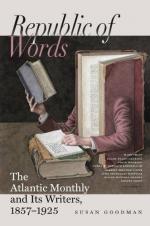With such an organization and such materials, there was nothing in the plan which could be pronounced incredible or impracticable. There is no reason why they should not have taken the city. After all the Governor’s entreaties as to moderate language, the authorities were obliged to admit that South Carolina had been saved from a “horrible catastrophe.” “For although success could not possibly have attended the conspirators, yet, before their suppression, Charleston would probably have been wrapped in flames, many valuable lives would have been sacrificed, and an immense loss of property sustained by the citizens, even though no other distressing occurrences were experienced by them, while the plantations in the lower country would have been disorganized, and the agricultural interests have sustained an enormous loss.” The Northern journals had already expressed still greater anxieties. “It appears,” said the “New York Commercial Advertiser,” “that, but for the timely disclosure, the whole of that State would in a few days have witnessed the horrid spectacle once witnessed in St. Domingo.”
My friend David Lee Child has kindly communicated to me a few memoranda of a conversation held long since with a free colored man who had worked in Vesey’s shop during the time of the insurrection, and these generally confirm the official narratives. “I was a young man then,” he said, “and, owing to the policy of preventing communication between free colored people and slaves, I had little opportunity of ascertaining how the slaves felt about it. I know that several of them were abused in the street, and some put in prison, for appearing in sack-cloth. There was an ordinance of the city, that any slave who wore a badge of mourning should be imprisoned and flogged. They generally got the law, which is thirty-nine lashes, but sometimes it was according to the decision of the Court.” “I heard, at the time, of arms being buried in coffins at Sullivan’s Island.” “In the time of the insurrection, the slaves were tried in a small room, in the jail where they were confined. No colored person was allowed to go within two squares of the prison. Those two squares were filled with troops, five thousand of whom were on duty, day and night. I was told, Vesey said to those that tried him, that the work of insurrection would go on; but as none but white persons were permitted to be present, I cannot tell whether he said it.”
During all this time there was a guarded silence in the Charleston journals, which strongly contrasts with the extreme publicity at last given to the testimony. Even the “National Intelligencer,” at Washington, passed lightly over the affair, and deprecated the publication of particulars. The Northern editors, on the other hand, eager for items, were constantly complaining of this reserve, and calling for further intelligence. “The Charleston papers,” said the “Hartford Courant” of July 16th, “have been silent on the subject




